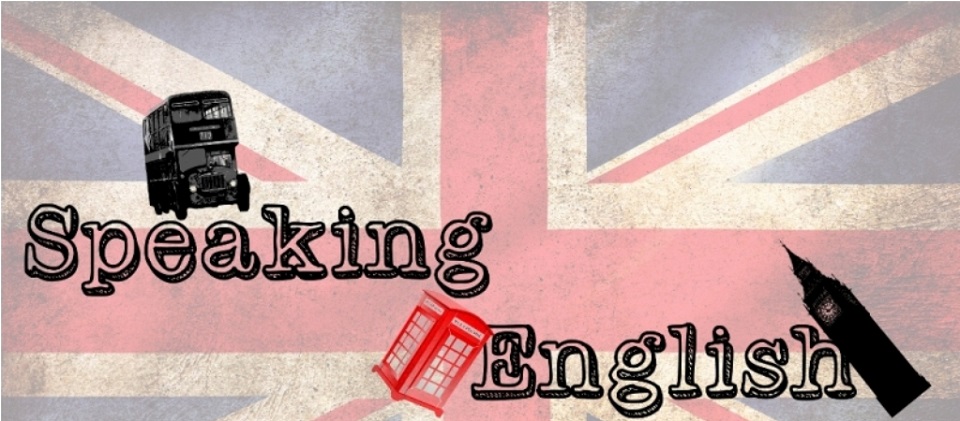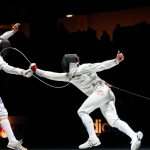By Andreas Stolakis
Fencing is considered a combat sport like boxing and martial arts. Main characteristic of fencing is the use of swords and, nowadays, the protective gear.
Origins:The word “Fencing” derives from the Latin word “defensa” which means protection.The first known use of the word in reference to English fencing is in William Shakespeare’s Merry Wives of Windsor: ‘Alas sir, I cannot fence.’.
Fun fact:Fencing is one of only four sports to have been featured in every modern Olympics. It made its debut in 1896, when the programme consisted of three men’s events. It is also claimed that, in its debut year in Greece, Georgios the first (King of Greece) was late. He was such an avid supporter of the sport that he had every match that took place before he arrived replayed before him.
Brief history of fencing
Fencing is dated back to Ancient Egypt and later on to Ancient Greece used for military combat.It didn’t become a sport until the Romans came around. The mighty “gladiators” fought until their last breath to achieve glory and freedom. Though, back then fencing was not viewed for the talent of the fencer, rather for the violence and cruelty. During the Middle ages fencing had more of a survival importance than an athletic one. Around this time came the first pieces of fencing manuscripts. The oldest fencing manual we know of dates back to 1300 A.D, there are no clues pointing to the identity of the writer or the reasons that it was written for but it provides information on how to use a shield and sword. Old world European Fencing: The sport is changing. With the invention of guns and gunpowder swords are of no use in battle fields, swords are limited to individual fights or “Duels” and are used for self-defense. Fencing is slowly starting to look like the modern version of it. The hand that is not holding the sword usually had a shield, but in duels with the emphasis given to speed the hand is empty, also swords are thinner and lighter. Throughout this time, there is an explosion of fencing schools all around Europe and now is also the time when the first fencing champions come around. Dueling is being outlawed in Europe and slowly over the years fencing becomes a sport.
Disciplines
The three disciplines in modern fencing are the foil, the epee, and the sabre (all weapons/swords are made of metal); winning points are made through the weapon’s contact with an opponent.
Foil: It is flexible, rectangular in cross section, and weighs under a pound. Points are only scored by contact with the tip, which, in electrically scored tournaments, is capped with a spring-loaded button to signal a touch.A foil fencer’s uniform features the lamé (a vest, electrically wired to record hits). Foil is the most used discipline in competitions.
Epee: Is the heaviest and the largest of the three swords.It is triangular in cross-section with a V-shaped groove called a fuller. The épée also has a larger bell guard and weighs more. The techniques of their use differ, as there are no rules regarding priority and right of way. Thus, immediate counter attacks are a common feature of épée fencing. In addition, the entire body is a valid target area.
Sabre: The sabre weapon is for thrusting and cutting with both the cutting edge and the back of the blade,unlike other modern fencing weapons, the epee and foil, where the methods of making a hit are scored using only the point of the blade.
GEAR
Most personal protective equipment for fencing is made of tough cotton or nylon. Kevlar was added to top level uniform pieces (jacket, breeches, underarm protector, lamé, and the bib of the mask) following the death of Vladimir Smirnov at the 1982 World Championships in Rome. However, Kevlar is degraded by both ultraviolet light and chlorine, which can complicate cleaning.
Other ballistic fabrics, such as Dyneema, have been developed that resist puncture, and which do not degrade the way that Kevlar does. FIE rules state that tournament wear must be made of fabric that resists a force of 800 newtons (180 lb), and that the mask bib must resist twice that amount.
The complete fencing kit includes:
Jacket: The jacket is form-fitting, and has a strap that passes between the legs. In sabre fencing, jackets are cut along the waist. A small gorget of folded fabric is sewn in around the collar to prevent an opponent’s blade from slipping under the mask and along the jacket upwards towards the neck. Fencing instructors may wear a heavier jacket, such as one reinforced by plastic foam, to deflect the frequent hits an instructor endures.
Plastron: A plastron is an underarm protector worn underneath the jacket. It provides double protection on the side of the sword arm and upper arm. There is no seam under the arm, which would line up with the jacket seam and provide a weak spot.
Glove: The sword hand is protected by a glove with a gauntlet that prevents blades from going up the sleeve and causing injury. The glove also improves grip.
Breeches: Breeches or knickers are short trousers that end just below the knee. The breeches are required to have 10 cm of overlap with the jacket. Most are equipped with suspenders.
Socks: Fencing socks are long enough to cover the knee, some cover most of the thigh.
Shoes: Fencing shoes have flat soles, and are reinforced on the inside for the back foot, and in the heel for the front foot. The reinforcement prevents wear from lunging.
Mask: The fencing mask has a bib that protects the neck. The mask should support 12 kilograms (26 lb) on the metal mesh and 350 newtons (79 lb) of penetration resistance on the bib. FIE regulations dictate that masks must withstand 25 kilograms (55 lb) on the mesh and 1,600 newtons (360 lb) on the bib. Some modern masks have a see-through visor in the front of the mask. These have been used at high level competitions (World Championships etc.), however, they are currently banned in foil and épée by the FIE, following a 2009 incident in which a visor was pierced during the European Junior Championship competition. There are foil, sabre, and three-weapon masks.
Chest protector: A chest protector, made of plastic, is worn by female fencers and, sometimes, by males. Fencing instructors also wear them, as they are hit far more often during training than their students. In foil fencing, the hard surface of a chest protector decreases the likelihood that a hit registers.
Lame: A lame is a layer of electrically conductive material worn over the fencing jacket in foil and sabre fencing. The lame covers the entire target area, and makes it easier to determine whether a hit fell within the target area. (In épée fencing the lame is unnecessary, since the target area spans the competitor’s entire body.) In sabre fencing, the lame’s sleeves end in a straight line across the wrist; in foil fencing, the lame is sleeveless. A body cord is necessary to register scoring. It attaches to the weapon and runs inside the jacket sleeve, then down the back and out to the scoring box. In sabre and foil fencing, the body cord connects to the lame in order to create a circuit to the scoring box.
Sleeve: An instructor or master may wear a protective sleeve or a leg leather to protect their fencing arm or leg, respectively.
Fun fact: The fencing suits are white, because in earlier times, touching was recorded with a piece of cotton at the tip of the weapon dipped in ink.
TECHNIQUES
Techniques or movements in fencing can be divided into two categories: offensive and defensive. Some techniques can fall into both categories (e.g. the beat). Certain techniques are used offensively, with the purpose of landing a hit on your opponent while holding the right of way (foil and sabre). Others are used defensively, to protect against a hit or obtain the right of way.(Right of way is the decision criterion used in foil and sabre fencing to determine which fencer receives the touch, or point, when both fencers land a hit within the same short time-frame, less than 1 second.In epee if both fencers land a hit at the same time, they are both awarded a point.)
Offense:
Attack: A basic fencing technique, also called a thrust, consisting of the initial offensive action made by extending the arm and continuously threatening the opponent’s target. There are four different attacks (straight thrust, disengage attack, counter-disengage attack and cutover). In sabre, attacks are also made with a cutting action.
Riposte: An attack by the defender after a successful parry. After the attacker has completed their attack, and it has been parried, the defender then has the opportunity to make an attack, and (at foil and sabre) take right of way.
Feint: A false attack with the purpose of provoking a reaction from the opposing fencer.
Lunge: A thrust while extending the front leg by using a slight kicking motion and propelling the body forward with the back leg.
Beat attack: In foil and sabre, the attacker beats the opponent’s blade to gain priority (right of way) and continues the attack against the target area. In épée, a similar beat is made but with the intention to disturb the opponent’s aim and thus score with a single light.
Disengage: A blade action whereby the blade is moved around the opponent’s blade to threaten a different part of the target or deceive a parry.
Compound attack: An attack preceded by one or more feints which oblige the opponent to parry, allowing the attacker to deceive the parry.
Continuation/renewal of Attack: A typical épée action of making a 2nd attack after the first attack is parried. This may be done with a change in line; for example, an attack in the high line (above the opponent’s bellguard, such as the shoulder) is then followed with an attack to the low line (below the opponent’s bellguard, such as the thigh, or foot); or from the outside line (outside the bellguard, such as outer arm) to the inside line (inside the bellguard, such as the inner arm or the chest). A second continuation is stepping slight past the parry and angulating the blade to bring the tip of the blade back on target. A renewal may also be direct (without a change of line or any further blade action), in which case it is called a remise. In foil or sabre, a renewal is considered to have lost right of way, and the defender’s immediate riposte, if it lands, will score instead of the renewal.
Flick: a technique used primarily in foil and épée. It takes advantage of the extreme flexibility of the blade to use it like a whip, bending the blade so that it curves over and strikes the opponent with the point; this allows the fencer to hit an obscured part of the target (e.g., the back of the shoulder or, at épée, the wrist even when it is covered by the guard). This technique has become much more difficult due to timing changes which require the point to stay depressed for longer to set off the light.
Defense:
Parry: Basic defence technique, block the opponent’s weapon while it is preparing or executing an attack to deflect the blade away from the fencer’s valid area and (in foil and sabre) to give fencer the right of way. Usually followed by a riposte, a return attack by the defender.
Circle parry: A parry where the weapon is moved in a circle to catch the opponent’s tip and deflect it away.
Counter attack: A basic fencing technique of attacking your opponent while generally moving back out of the way of the opponent’s attack. Used quite often in épée to score against the attacker’s hand/arm. More difficult to accomplish in foil and sabre unless one is quick enough to make the counterattack and retreat ahead of the advancing opponent without being scored upon, or by evading the attacking blade via moves such as the In Quartata (turning to the side) or Passata-sotto (ducking). Counterattacks can also be executed in opposition, grazing along the opponent’s blade and deflecting it to cause the attack to miss.
Point-in-line: A specific position where the arm is straight and the point is threatening the opponent’s target area. In foil and sabre, this gives one priority if the extension is completed before the opponent begins the final action of their attack. When performed as a defensive action, the attacker must then disturb the extended weapon to re-take priority; otherwise the defender has priority and the point-in-line will win the touch if the attacker does not manage a single light. In épée, there is no priority; the move may be used as a means by either fencer to achieve a double-touch and advance the score by 1 for each fencer. In all weapons, the point-in-line position is commonly used to slow the opponent’s advance and cause them to delay the execution of their attack.
To sum up, fencing is a demanding yet exciting sport. Unlike most people think, it’s not very expensive. Equipment for competitions ranges from 250 euro all the way up to 1000. It’s still cheaper than sports such as sailing and even tennis!
Sources:
https://en.wikipedia.org/wiki/Fencing
https://www.fistosports.com/15-things-about-fencing-you-ought-to-know





